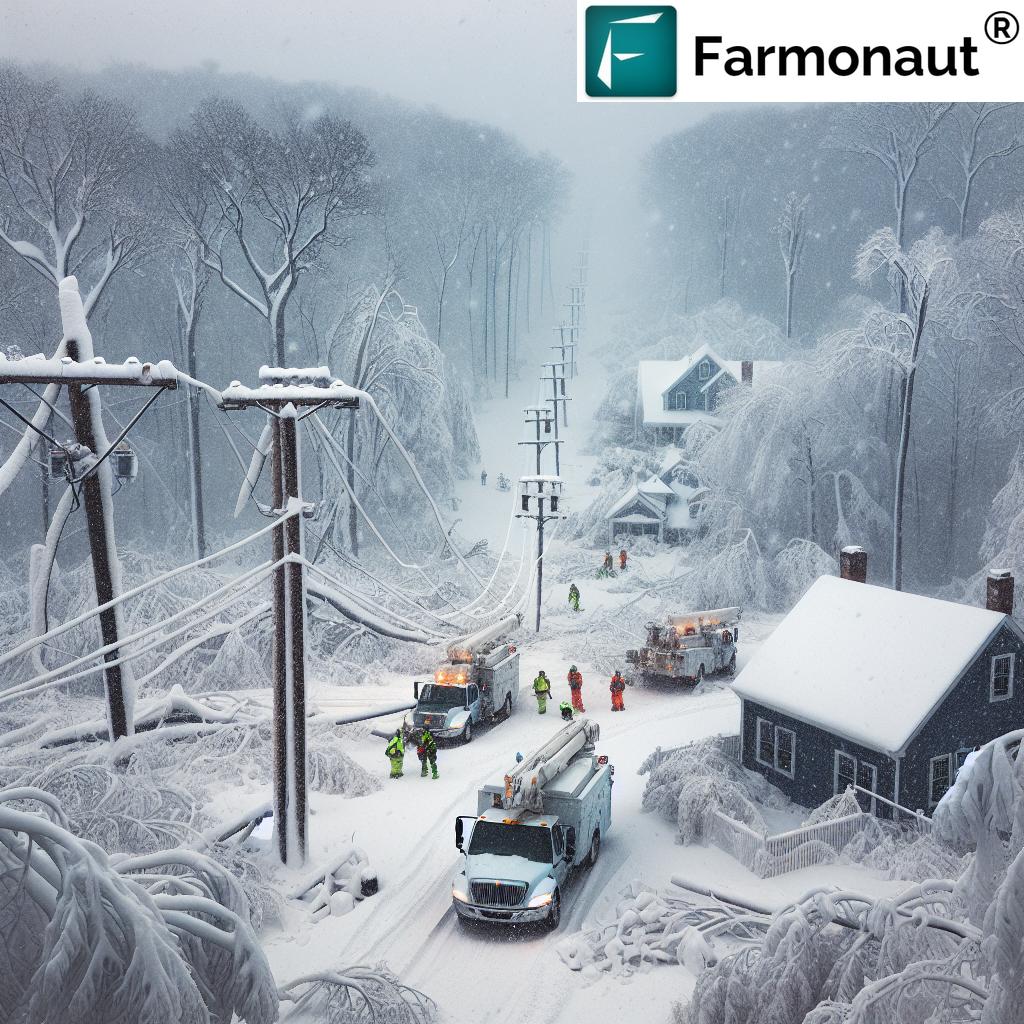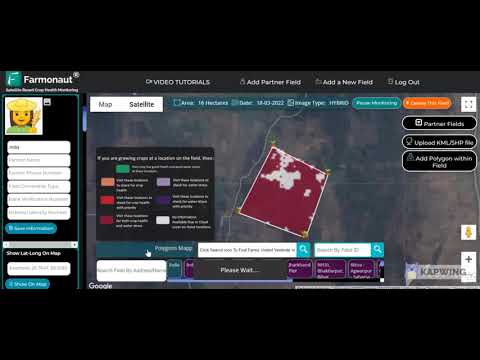Virginia’s Winter Storm Challenge: Essential Preparedness for Power Outages and Emergency Response
“Virginia’s utility crews face a ‘Groundhog Day’ scenario, battling repeated storms while restoring power to thousands.”
As we face another severe winter storm in Virginia, our communities are bracing for potential power outages and emergency situations. The recent onslaught of snow, freezing rain, and high winds has already left its mark, with thousands of residents experiencing extended periods without electricity. In this comprehensive guide, we’ll explore the challenges posed by winter storms, discuss the ongoing efforts to restore power, and provide essential preparedness tips to help you weather the storm.
Understanding the Impact of Winter Storms on Virginia’s Power Grid
Winter storms pose a significant threat to our power infrastructure, particularly in heavily forested areas and regions with challenging terrain. The combination of snow, ice, and strong winds can lead to downed power lines, damaged transformers, and widespread outages. In Virginia, where dense forests and varied topography are common, these risks are amplified.
The recent storms have saturated the soil and weakened tree roots, increasing the likelihood of further damage to our power infrastructure. This creates a compounding effect, where each successive storm exacerbates the challenges faced by utility crews working tirelessly to restore electricity to affected areas.

The Ongoing State of Emergency
Governor Glenn Youngkin has declared a state of emergency in Virginia, emphasizing the severity of the situation and the need for heightened preparedness. This declaration allows for the mobilization of additional resources and personnel to respond to the winter storm emergency. As residents, it’s crucial that we heed these warnings and take necessary precautions to ensure our safety and that of our communities.
Power Restoration Efforts: A Real-Life “Groundhog Day”
Utility companies across Virginia are working around the clock to restore power to affected areas. However, the repeated storms have created a scenario reminiscent of the movie “Groundhog Day,” where crews find themselves tackling similar challenges day after day. Despite this, their dedication and expertise have allowed them to become increasingly efficient in their response.
George Porter, an Appalachian Power spokesperson, highlighted the unique challenges faced by crews in our region: “Our area, our mountains, our terrain, the heavily forested areas that we have here leads to many outages, so we get a lot of practice at this.” This experience has proven invaluable as teams work tirelessly to reconnect communities to the power grid.
Preparing for Severe Winter Weather: Essential Tips
As we face the possibility of extended power outages and severe winter conditions, it’s crucial to be well-prepared. Here are some essential tips to help you and your family stay safe:
- Create an emergency kit: Include non-perishable food, water, flashlights, batteries, a battery-powered or hand-crank radio, first aid supplies, and any necessary medications.
- Insulate your home: Seal windows and doors to prevent heat loss and conserve energy.
- Have alternative heating sources: Prepare safe, non-electric heating options like fireplaces or wood stoves.
- Charge devices: Ensure all phones, tablets, and portable chargers are fully charged before the storm hits.
- Stock up on supplies: Have enough food, water, and essential items to last at least 72 hours.
- Stay informed: Keep track of weather updates and emergency notifications through local news and official channels.
Challenges in Power Restoration During Winter Storms
Restoring power after winter storms presents unique challenges for utility crews. The combination of snow, ice, and fallen trees can make accessing damaged infrastructure difficult and dangerous. In Virginia’s heavily forested areas, crews often face additional obstacles in reaching affected power lines and equipment.
Moreover, the saturated soils from previous storms increase the risk of trees falling even after the initial storm has passed. This ongoing threat requires crews to remain vigilant and adapt their strategies to ensure safe and efficient power restoration.
Mobilizing Resources and Mutual Aid
To address the widespread power outages and prepare for potential future disruptions, utility companies are mobilizing all available resources. This includes:
- Repositioning crews to areas expected to be hit hardest by the storm
- Seeking mutual aid from other regions to bolster the workforce
- Ensuring equipment and supplies are readily available for rapid deployment
- Coordinating with local emergency services to prioritize critical infrastructure
These efforts demonstrate the commitment of utility companies to restore power as quickly and safely as possible, even in the face of challenging weather conditions.
The Role of Technology in Storm Preparedness and Response
Advanced technology plays a crucial role in both preparing for and responding to winter storms. Satellite imagery, weather forecasting models, and AI-driven predictive analytics help utilities and emergency responders anticipate potential impacts and allocate resources more effectively.
For instance, companies like Farmonaut provide valuable satellite-based monitoring and weather data that can be instrumental in assessing storm impacts and planning response strategies. While primarily focused on agricultural applications, such technologies demonstrate the broader potential for satellite data in emergency preparedness and response.
“Saturated soils and damaged trees from previous storms increase infrastructure damage risk by an estimated 30%.”
Community Resilience: Working Together to Weather the Storm
In times of crisis, community solidarity becomes our greatest strength. As we face these winter storm challenges, it’s important to check on neighbors, especially the elderly or those with special needs. Share resources, information, and support to ensure everyone in our community stays safe and warm.
Local organizations, community centers, and faith-based groups often play a vital role in providing shelter, warm meals, and other essential services during emergencies. Stay informed about available resources in your area and don’t hesitate to seek help if needed.
Virginia Winter Storm Impact and Preparedness Guide
| Preparedness Category | Essential Actions | Potential Risks | Emergency Resources |
|---|---|---|---|
| Power Outages |
– Prepare backup power sources – Charge all devices – Have battery-powered lights |
– Extended blackouts in forested areas – Loss of heating systems – Food spoilage |
– Local utility company hotline – Virginia Department of Emergency Management |
| Food and Water |
– Stock non-perishable food – Store at least 1 gallon of water per person per day – Have a manual can opener |
– Food shortages – Water contamination – Dehydration |
– Local food banks – Red Cross emergency services |
| Heating |
– Insulate windows and doors – Have safe alternative heating sources – Gather warm clothing and blankets |
– Hypothermia – Carbon monoxide poisoning from improper heating – Fire hazards |
– Local warming centers – Fire department for heating safety advice |
| Communication |
– Have a battery-powered or hand-crank radio – Keep a list of emergency contacts – Know your community’s emergency alert system |
– Loss of cellular and internet services – Isolation from emergency updates – Difficulty contacting emergency services |
– NOAA Weather Radio – Local emergency management office |
| Transportation |
– Winterize your vehicle – Keep emergency supplies in your car – Stay informed about road conditions |
– Hazardous road conditions – Stranded vehicles – Traffic accidents |
– Virginia Department of Transportation – Local towing services |
Leveraging Technology for Weather Monitoring and Preparedness
In today’s digital age, we have access to powerful tools that can help us stay informed and prepared for severe weather events. While many of these technologies are designed for agricultural use, their applications extend to general weather monitoring and emergency preparedness.
For instance, Farmonaut’s satellite and weather API provides real-time data that can be crucial for tracking storm movements and assessing potential impacts. While primarily used for agricultural purposes, this technology demonstrates the broader potential of satellite data in emergency preparedness.
For those interested in accessing detailed weather data, you can explore the Farmonaut API Developer Docs. While these tools are designed for developers and agricultural professionals, they highlight the importance of data-driven approaches in weather monitoring and response planning.
The Impact of Winter Storms on Agriculture and Infrastructure
Winter storms not only affect our daily lives but also have significant implications for agriculture and infrastructure. Heavy snow and ice can damage crops, disrupt livestock management, and impact long-term soil conditions. For farmers and agricultural businesses, preparing for and responding to these challenges is crucial.
Modern agricultural technologies, such as those offered by companies like Farmonaut, can help in monitoring field conditions and assessing storm impacts. While our focus is on urban and suburban preparedness, it’s worth noting how these technologies contribute to overall resilience in the face of severe weather events.
Long-Term Preparedness: Building Resilience Against Future Storms
While our immediate focus is on weathering the current storm, it’s essential to consider long-term strategies for building resilience against future winter weather events. This includes:
- Advocating for infrastructure improvements to make power grids more resilient
- Supporting tree management programs to reduce the risk of power line damage
- Encouraging community-wide emergency preparedness training and drills
- Investing in renewable energy sources and microgrids to reduce dependence on centralized power systems
- Promoting energy-efficient home improvements to reduce strain on the power grid during peak usage
By taking a proactive approach to winter storm preparedness, we can work together to create more resilient communities capable of withstanding future challenges.
The Role of Satellite Technology in Emergency Response
Satellite technology plays a crucial role in modern emergency response efforts. While often associated with agricultural applications, these technologies have broader implications for disaster management and preparedness. For instance, satellite imagery can be used to:
- Assess storm damage over large areas
- Identify areas most in need of immediate assistance
- Monitor flood levels and potential landslide risks
- Track the movement of severe weather systems
Companies like Farmonaut, which specialize in satellite-based monitoring for agriculture, demonstrate the potential of these technologies. While their primary focus is on crop health and field management, the underlying technology has applications in emergency response and urban planning.
Community Support and Resources
During times of crisis, it’s important to be aware of the resources available in your community. Here are some key points to remember:
- Know the location of local emergency shelters and warming centers
- Familiarize yourself with your community’s emergency alert system
- Keep a list of important phone numbers, including utility companies and emergency services
- Stay informed about available assistance programs for those affected by the storm
- Consider volunteering or donating to local organizations that support disaster relief efforts
Remember, community resilience is built on mutual support and preparedness. By working together and staying informed, we can better navigate the challenges posed by severe winter weather.
Frequently Asked Questions
Q: How long can power outages last during a winter storm?
A: Power outages during winter storms can last anywhere from a few hours to several days, depending on the severity of the damage and accessibility for repair crews.
Q: What should I do if I lose power during the storm?
A: Stay calm, use battery-powered lights, keep refrigerator and freezer doors closed as much as possible, and follow your emergency preparedness plan.
Q: How can I stay warm if my heating system is not working?
A: Layer clothing, use blankets, close off unused rooms, and use safe alternative heating methods like fireplaces or properly ventilated space heaters.
Q: Is it safe to use a generator during a power outage?
A: Generators can be used safely if operated outdoors and away from windows to prevent carbon monoxide poisoning. Always follow manufacturer instructions.
Q: How can I help my community during a winter storm emergency?
A: Check on neighbors, especially the elderly or those with special needs, share resources if you have them, and follow official guidance to avoid putting additional strain on emergency services.
Conclusion: Staying Resilient in the Face of Winter Challenges
As Virginia faces ongoing winter storm challenges, our resilience as a community is put to the test. By staying informed, prepared, and supportive of one another, we can weather these storms and emerge stronger. Remember to follow official guidance, prioritize safety, and reach out for help when needed.
While we’ve focused on immediate preparedness and response, it’s worth considering how emerging technologies, even those primarily designed for other sectors like agriculture, can contribute to our overall resilience and ability to respond to emergencies. As we move forward, embracing innovation and community cooperation will be key to building a more weather-resilient Virginia.

Stay safe, stay warm, and remember that together, we can overcome any challenge that winter throws our way.
Farmonaut Subscriptions
Earn With Farmonaut
Earn 20% recurring commission with Farmonaut’s affiliate program by sharing your promo code and helping farmers save 10%. Onboard 10 Elite farmers monthly to earn a minimum of $148,000 annually—start now and grow your income!







